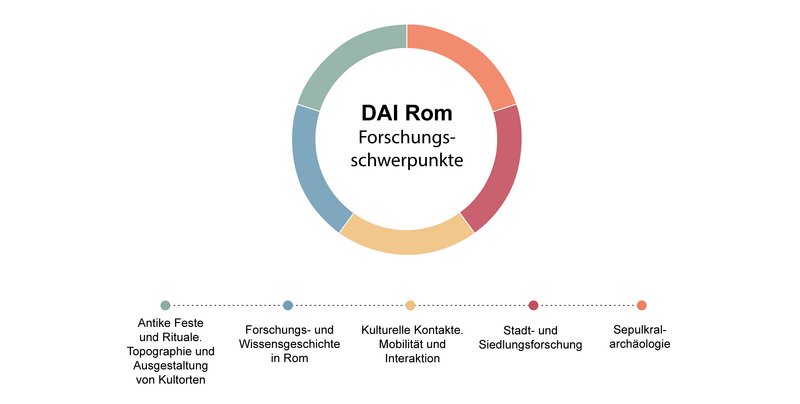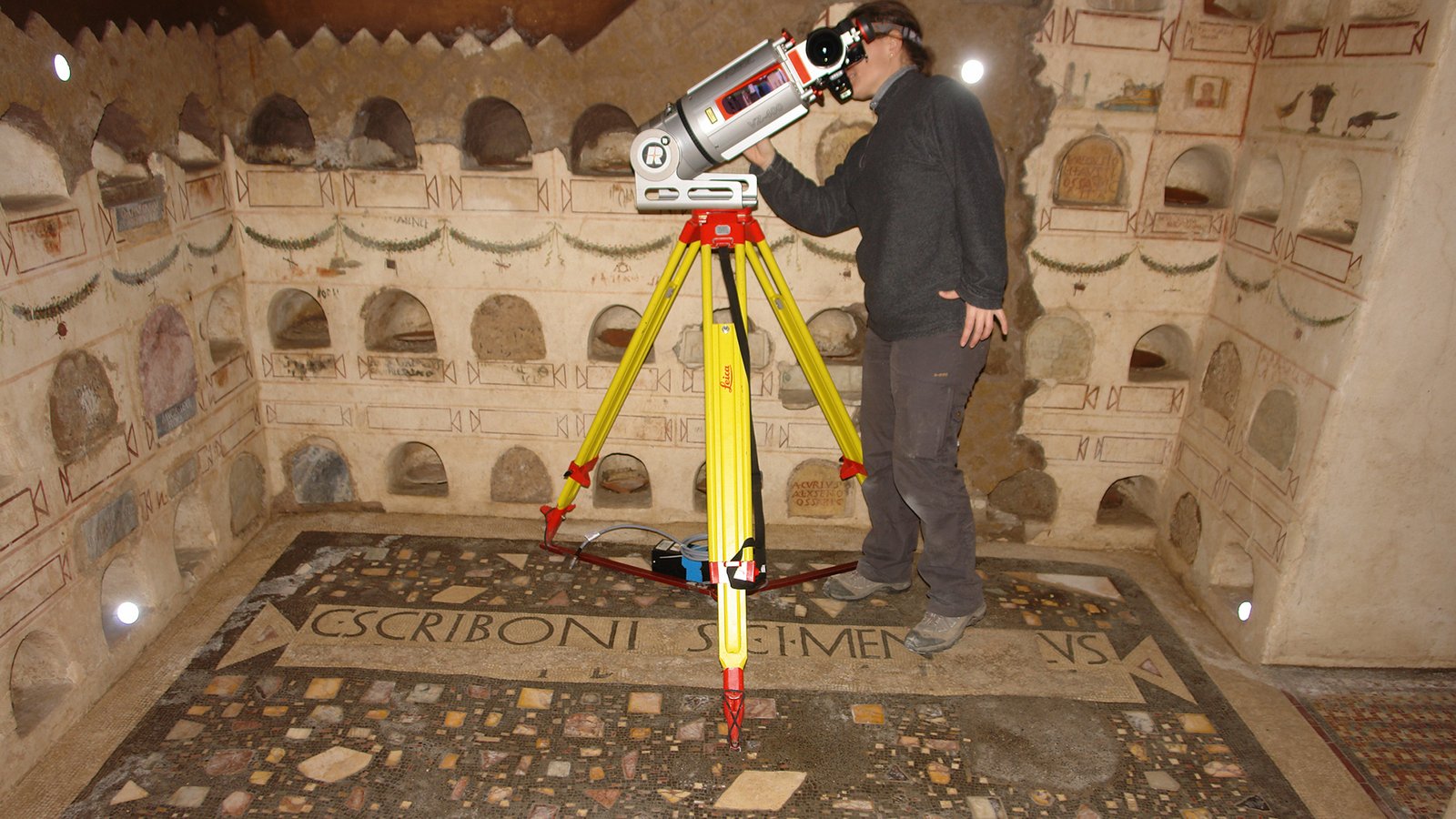Our Topics and Outlook
The DAI's long-standing presence and activities in its host country Italy for more than 190 years have created the foundations of trust that shore up all research projects overseen by the department. Archaeological fieldwork has profoundly changed over time, owing to technological innovation and digital networking. 3D laser scanners, drones, geophysical measuring instruments, and scientific probing methods significantly speed-up and increase the precision at which excavation sites are recorded, evaluated, and interpreted today. More than ever is modern archaeology located at the interface between the humanities and the natural sciences, whilst also maintaining close links with measures of capacity-building and site enhancement. The databases of the images, texts, and artefacts in all departments are respectively linked to the digital libraries.
By contrast to the Athens Department, which was founded in 1874, the institute in Rome was to begin with first and foremost interested image research. Since the 1960s, image, object, and field research have been part of the department's enlarged methodological toolkit, which continually is undergoing expansion through hosts of interdisciplinary cooperation. This includes applications in the natural sciences, architectural research, epigraphic projects, as well as such disciplines to be found at the interface between archaeology and the digital humanities. Site management and enhancement measures have particularly gained in culture-political significance both in Italy, where the DAI has been involved in the restoration of the Domus Aurea in Rome since 2008, and in North Africa. More recently, the institute has been especially engaged with capacity-building efforts at the UNESCO World Heritage Site of Carthage as well as at Cherchell (Algeria) and in Libya, which in the coming years will continue to develop in conjunction with the maintenance of research projects in the field.

© DAI // Francesca De Santis
Research priorities and research networking
The range of the department's projects laid out predominantly in a diachronic approach to treat certain issues - in which object-related studies (e.g. investigations into sculpture or ceramics) are considered just as relevant as ones pertaining to ancient settlement areas (e.g. in Sardinia, Northern Italy/Golasecca culture), settlements, cities (e.g. Rome, Selinunte, Carthage, Cherchell) and individual building complexes (e.g. amphitheatres) – ranges from long-term, like the one at Selinunte (since 1971), to medium and short-term projects. They are bundled together in a research plan which currently consists of five following areas of chief interests: urban centres and settlements, funerary archaeology, cultural contacts, mobility and interaction, ancient festivals and rituals. Topography and layout of places of worship as well as history of research and knowledge in ancient Rome.
Communication and networking are relevant both for exchange within the department and with the Italian and international professional community. The department is among other member of the Unione Internazionale degli Istituti di Archeologia, Storia e Storia dell'Arte in Roma and the Associazione Internazionale di Archeologia Classica (AIAC) and also participates with other DAI departments in projects, networks, and clusters. With its cultural archives, it contributes to the continuous expansion of the iDAI.world.

